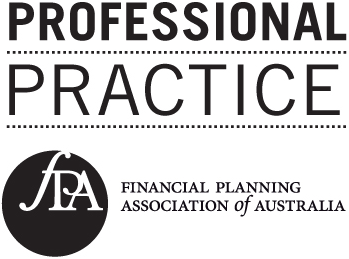Downsizer and bring forward combination creates new opportunities for super strategy
With the recent bring-forward measures passed along with further extension proposed in the federal budget, its combination with potential downsizer rule changes creates a different perspective for the SMSF strategy when it comes to implementation.

In the recent federal budget, the government had announced the proposal to bring the eligibility for “downsizer contributions” forward to 60 from 65. These are the contributions people can make on selling their home as long as they meet a range of conditions.
The second proposal is extending bring-forward opportunities from 65 to 74. This would also further add to the recently passed measures to the bring-forward rules which extended the bring-forward age up to 67.
In a recent technical update, Heffron managing director Meg Heffron said that what is particularly interesting is that, historically, the two kinds of contributions have been mostly mutually exclusive and now they won’t be.
Previously, bring-forward contributions could only be initiated up until the year in which the individual turns 65 and downsizer contributions are only possible after 65.
Ms Heffron noted that in the future, they may well happen at the same time and the order could be important.
“For example, let’s imagine the new rules are in place as planned for 2022–23. At June 30, 2022, Trish is 61 and has $1.4 million in super. There have been no changes to any caps or thresholds for being allowed to use the bring-forward rules since July 1, 2021,” she said in a blog.
“That means anyone wishing to use the bring-forward rules to contribute three years’ worth of non-concessional contributions at once must have had less than $1.48 million in super at the previous June 30. It looks like Trish meets this requirement.
“Trish intends to sell her house and would also like to transfer some shares she owns personally into the fund as an in-specie contribution using the bring-forward rules.
“In Trish’s mind, the two events are not connected, but in fact, timing is everything.”
If Trish sells her house and makes a $300,000 downsizer contribution in 2022–23, Ms Heffron said she may find that her total super balance rules her out of making large non-concessional contributions the following year (2023–24).
By contrast, if she makes both contributions in 2022–23 she’ll be fine because her 30 June 2022 balance will be low enough to allow the normal three-year bring-forward allowance.
“Equally, she could use the bring-forward rules in 2022–23 and even sell the house in 2023–24 (making a downsizer contribution that year) because — fortunately — the size of her June 30, 2023 balance doesn’t matter when it comes to making a downsizer contribution,” Ms Heffron explained.
“Remember that Trish won’t have a lot of choice when it comes to the year in which her downsizer contribution is made — the contribution must be made within 90 days of settlement. So, she may be locked into a particular financial year based on when she sells the house. But what if the house settles in May 2023? Then she has choices — and they may really matter, depending on her contribution plans for 2023–24.”
Another crucial area in which the new rules would collide with existing ones in a different way is preservation (this is the rule that keeps super locked up until retirement), according to Ms Heffron.
“Traditionally, preservation has not been an issue for downsizer contributions. They weren’t available until age 65 and, at that point, super is entirely unpreserved in any case. But what happens now if a downsizer contribution is made at 60?” she noted.
“Unless there is an explicit change to the preservation rules to prevent this, the downsizer contribution will be preserved like any other superannuation contribution.
“Like any other contribution, it could still be used to provide a pension, but unless the member has retired (or met another condition that frees up super), the pension will be a slightly more restrictive one known as a ‘transition to retirement’ pension.
“This is nothing new or unique to downsizer contributions. What is unique is that the changing of the age at which they become available will mean downsizer contributions bump into other superannuation rules in ways that may be unexpected.”
Tony Zhang
21 June 202
smsadviser.com
Latest eNewsletters
Hot Issues
- AI exuberance: Economic upside, stock market downside
- Becoming a member of an SMSF is easy, but there are other things that need to be considered
- Investment and economic outlook, November 2025
- Move assets before death to avoid tax implications
- ATO issues warning about super schemes
- 12 financial tips for the festive season and year ahead
- Birth date impacts bring-forward NCCs
- Countries with the largest collection or eucalyptus trees
- How to budget using the envelope method
- Accountants united in support for changes
- Investment and economic outlook, October 2025
- Stress-test SMSF in preparation for Div 296
- Determining what is an in-house asset can help determine investment strategy
- Beware pushy sales tactics targeting your super
- Call for SMSF ‘nudge’ in DBFO package
- How Many Countries Divided From The Largest Empire throughout history
- How changes to deeming rates could affect your pension payments
- Five building blocks that could lead to a more confident retirement
- Investment and economic outlook, September 2025
- Caution needed if moving assets to children
- Evolution of ‘ageless workers’ sees retirement age rise
- Younger Australians expect more for their retirement
- New NALE guidance still has issues
- Airplane Fuel Consumption Per Minute


